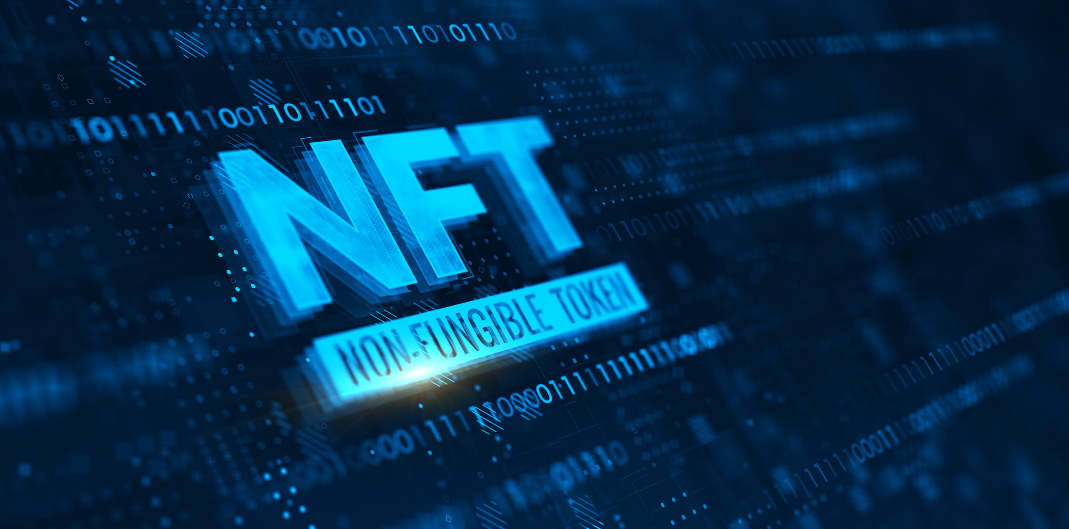- Reading time: 3 mins 41 secs
If you have heard of NFTs, congratulations, and welcome to the modern world!
NFTs are the current big thing in the crypto ecosystem.
But do you know what NFT stands for?
NFT is short for non-fungible tokens.
An NFT is a crypto asset that exists digitally on the blockchain.
As any blockchain course will tell you, initially, the blockchain was a public ledger that records crypto transactions and where crypto investing and trading occurs.
An NFT has a unique identification code that makes it one-of-a-kind to any other NFT.
Just as cryptos are “mined,” so NFTs are “minted.”
NFTs are minted from physical and non-physical digital items.
If you owned an NFT, it would be like owning an original masterpiece by a famous artist.
But instead of hanging that physical painting on your wall, you have a digital file in the virtual world.
And that is why artists turn to NFTs as a means to sell their artwork, although NFTs can be utilized in many other ways (more on this later).
If there are non-fungible tokens, that means there are fungible ones, too, right?
Cryptocurrencies are fungible tokens, like other traditional fiat currencies such as dollars, pounds, yen, etc.
They are fungible because you can exchange them with each other. For example, you can exchange one dollar bill for another dollar bill.
One bitcoin is always equal in value to another bitcoin.
What makes NFTs unique is that you cannot exchange them that way.
NFTs are complete one-offs. Their value is unique.
[If you are new to NFTs then it’s a good idea to get on an online trading course to learn more].
It is this rarity factor that makes them the fastest-growing investment asset.
In 2021, an artwork by digital artist Beeple sold for a record-breaking $69 million. Correct, that sum is not a typo!
NFTs have been around since 2014 and were created specifically with artists in mind.
But as of 2022, NFTs have many uses.
So what else are NFTs good for?
Apart from digital artwork and other collectables, NFTs are starting to appear as:
- Limited-edition fashion line items
- In-game items
- Domain names
- Real-estate
- Degree certificates
- Tickets for events
And even essays.
As NFTs evolve, they could become the deeds to your car, invoices, signatures, and legal documents.
You can even use digital artwork as collateral in a decentralized loan.
You might one day buy your house using NFTs!
In essence, NFTs help prove ownership of unique items.
They are like digital passports.
NFTs as proof of ownership
There is only ever one owner at a time of any NFTs.
This ownership is transparent as it is made public through the worldwide blockchain ledger.
It is, therefore, easy to verify ownership of an NFT.
Proof of ownership is a crucial factor in trading and investing in NFTs.
It is no different from proving you have crypto in your wallet.
An NFTs creator can also store unique information within the NFT, like a painter signing a piece of artwork.
This is good to know if you are planning on trading investments.
How secure are NFTs?
NFTs have only been around since 2014.
Much like cryptos are still evolving, NFTs may be vulnerable to security breaches.
These breaches generally arise from phishing scams or user errors.
Optimum security is essential.
Digital wallets provide NFT security.
Trading & Investing NFTs
To invest in NFTs, you will first need a digital/crypto wallet.
That digital wallet will come with a Public Key and a Private Key.
- Public Key
A public key identifies the wallet, which enables it to be shared. It’s like having a bank account number.
The public key is used when a deposit is made into your wallet.
- Private Key
The private key secures the wallet like a PIN and must be kept secret at all times.
Private keys are used to sign transactions and decrypt data.
- Custodial Wallets
Opting for a custodial wallet means trusting a third party to look after it and keep it secure.
You only get login access when you want to send or receive payments.
Having a custodial wallet can be convenient because you don’t need to worry about keeping your private key safe and secure.
It’s like keeping money in a bank safe rather than your home safe.
But that does rely on trust.
- Non-Custodial Wallets
A non-custodial wallet is fully decentralized and grants all access to the wallet owner.
Transactions can be viewed in real-time on the blockchain.
You can access this wallet offline if in a “cold wallet” form.
This type of wallet does not store sensitive user data. That helps ensure optimum security.
Only you have access to the private key.
Bottom line – you get complete control over the wallet.
However, watch out if you lose your private key! Account recovery may be impossible.
A written backup is essential.
Zusammenfassung
NFTs are the current trending thing in the crypto and Defi space. They are another asset for the investor and trader to get excited about.
But they are new and still evolving. That means it is in your best interest to understand as much as you can about them before investing and trading them.
You can find out how to do that on this investment course.



